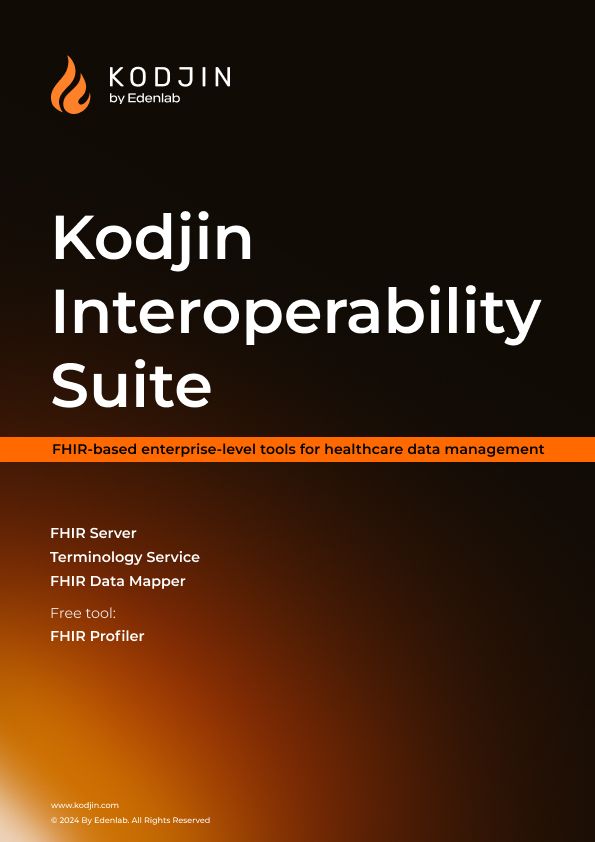The healthcare industry increasingly leans on data analytics to drive innovation, enhance patient outcomes, and optimize operations. The Fast Healthcare Interoperability Resources (FHIR) standard has emerged as a key factor in this journey. This article delves into the prospects, challenges, and potential solutions for leveraging FHIR analytics in healthcare settings.
What Is Healthcare Data Analytics?
Before diving into FHIR, it’s important to understand the traditions of healthcare data analytics, which involve analyzing and interpreting large sets of clinical data to gain actionable insights. The data comes from various sources, such as Electronic Health Records (EHRs), medical devices, and patient-generated data.
In healthcare organizations, such data serves a dual purpose: primary care delivery and secondary uses like research, quality improvement, and FHIR data analytics. The secondary usage has recently become as important as the primary, paving the way for a health data transformation with FHIR. However, there will always be challenges in healthcare data analytics, including data interoperability issues, privacy concerns, and the need for advanced analytical tools to process the vast and complex data generated in the healthcare ecosystem. These challenges must be addressed effectively to fully harness the potential of FHIR and OMOP healthcare data standards for improving patient care and advancing medical research.
Types of Analytics in Healthcare

A list of applications of medical data analytics that benefit the industry.
Analytics in healthcare can be broadly classified into three types:
- Descriptive Analytics: Basic reporting to depict current situations.
- Predictive Analytics: Forecasting trends and anticipating outcomes.
- Prescriptive Analytics: Financial and clinical optimization.
While all these levels are crucial, predictive analytics has gained more attention recently, especially when building analytics on FHIR.
You can read more about the state, benefits, and challenges of data analytics in healthcare in our comprehensive article.
The Rising Tide of FHIR Adoption
FHIR has positioned itself as the go-to standard for healthcare data interoperability. It facilitates standardization and data exchange, which significantly benefits healthcare analytics with FHIR.
In the United States, compliance with the 21st Century Cures Act requires that EHR systems include patient-facing apps based on FHIR standards. Starting in 2023, the Centers for Medicare and Medicaid Services (CMS) will mandate that healthcare payers integrate diverse FHIR-based applications.
Meanwhile, the European Union’s InteropEHRate initiative adopts FHIR protocols for personal health records and facilitates data exchange between providers. Additionally, New Zealand’s Ministry of Health and the United Kingdom’s National Health Service have incorporated FHIR standards in their national patient identifier systems.
As we wrote earlier: How Australian Digital Health Is Embracing FHIR Standards
Benefits of Healthcare Analytics on FHIR
The integration of a healthcare data analytics solution with FHIR standards marks a pivotal advancement in medical technology, offering unprecedented opportunities for enhancing patient care through more effective data utilization and analysis.
Healthcare data analytics using FHIR offers several significant advantages in business and technology:
Improved Data Interoperability
FHIR’s standardized data formats and APIs facilitate an easier exchange of healthcare information. This streamlined data interoperability allows organizations to analyze diverse data sets cohesively.
Comprehensive View of Patient Data
FHIR’s rich and extensible data model can capture a wide range of clinical concepts, providing a more complete picture of patient care. This enables more nuanced analytics that can drive personalized treatment plans.
Lower Costs
Standardization reduces the need for custom integration work, thereby lowering operational costs. Businesses can focus more on deriving actionable insights than struggling with data compatibility issues.
Regulatory Compliance
FHIR often aligns well with healthcare regulations requiring standardized electronic data sharing, such as HIPAA in the U.S., thus simplifying compliance efforts.
Innovation and Ecosystem Growth
The adoption of FHIR standards can stimulate innovation by enabling third-party developers to build applications that can easily integrate with existing systems, offering new avenues for analytics.
FHIR Data Analytics Challenges
FHIR has been revolutionary in streamlining the exchange and management of healthcare data. However, despite the enthusiasm around FHIR’s interoperability, the healthcare sector requires more than just data exchange. The adoption rate for FHIR in analytics remains low: the standard is still new, and the FHIR profiling tools data analytics have not matured.
There is an urgent need for analytics capabilities to process clinical data for various applications. In this context, FHIR faces unique challenges that must be addressed. Here are some key areas to consider:
Query Limitations
FHIR APIs are generally designed for single-patient data retrieval. They’re not natively built for complex queries that aggregate and categorize data across vast clinical datasets. This lack of optimized API capabilities limits the potential of advanced analytics that require multi-dimensional data querying.
High Expertise Barriers
Effective use of FHIR data for analytics requires an in-depth understanding of FHIR standards and clinical terminologies, such as ICD-10, LOINC, and SNOMED CT. This specialized expertise is still rare in the healthcare industry. The talent gap becomes a bottleneck in building FHIR analytics solutions.
Data Structuring and Ontologies
Although FHIR enables encoding clinical records with complex terminologies, it can be limiting when performing more generalized concept analysis. In-depth analytics often require a richer ontology that can capture relationships among various clinical concepts, which FHIR doesn’t readily support in its current state.
Tackling the Challenges of Building a FHIR Analytics Solution

Unified data for healthcare data analytics
While the challenges of FHIR analytics hinder the development of comprehensive solutions that support data-driven decision making in healthcare, they are not an insurmountable peak.
Our team at Edenlab was tasked by our client, Zoadigm, to create an FHIR-based analytics solution to solve a pressing issue in healthcare data: unifying disparate and siloed data sources to uncover hidden patterns within clinical data.
The project’s goal was to empower clinicians, payers, and patients by offering actionable intelligence and insights into patient cohorts, treatment pathways, and payment models.
A project of such complexity comes with its own challenges, some of which are tied to the FHIR data model. Below, we will explore how our team approached and overcame these challenges and built a multi-dimensional FHIR data analytics platform.
Main Challenges
FHIR is known for its interoperability benefits and complex, nested data structures, which makes its implementation within typical relational data models difficult. Other challenges include incomplete or inaccurate data, the necessity for real-time interactivity, and the need for an intuitive user interface. To address these complexities, a comprehensive FHIR implementation guide is essential for the successful adoption and integration of FHIR standards in healthcare systems.
Platform Architecture
Built on a scalable, cloud-agnostic microservices architecture, the platform is powered by Kubernetes and utilizes the Kodjin FHIR Server for efficient data storage. By incorporating information asset graph technology and semantic layer technology, the platform offers a robust analytics solution. It unifies data from multiple EHRs, allowing for advanced, user-defined analyses and data visualizations.
Our Approach
Nested Data Complexity: The complex and nested nature of FHIR data makes query building challenging. Our team tackled this using ClickHouse, a powerful column-oriented DBMS, to create custom schemas and queries. This optimized the data storage and query speed, making the complex FHIR data more accessible and easier to analyze.
Speed and Scalability: Using the Kodjin FHIR Server and its microservices architecture ensures fast, asynchronous data handling. This architecture efficiently addresses slow query execution due to large datasets inherent in healthcare.
Data Integrity and Quality: Our team created pipelines for data extraction, loading, transformation, and quality that utilize new information asset graph technology. The Kodjin FHIR Server also validates resources upon upload to maintain data integrity.
Multi-Dimensional Data Navigation: Navigating through multi-dimensional healthcare data for actionable insights is not straightforward and can be overwhelming for end-users. We implemented a semantic layer API to enable users to explore data through a ubiquitous language. Core components like the Cohort & Pathway Builder and Explorer were introduced to facilitate easy and interactive data analysis.
User Experience and Real-Time Interactivity: We created dynamic dashboards (liveboards) designed with clinicians and other end-users in mind. These liveboards allow users to explore patient cohorts and treatment pathways interactively, drilling into the data to reveal hidden patterns without requiring SQL or advanced technical skills. The interface was designed to be visually appealing and intuitive, minimizing the learning curve while maximizing real-time, actionable insights.
The results
By addressing these challenges head-on, we’ve built a comprehensive solution that unifies healthcare data, streamlines data analytics, and ensures regulatory compliance, delivering actionable insights for improved patient care and operational efficiency.
Read an in-depth case study on how we built this FHIR semantic layer analysis platform here.
Conclusion
Despite the complexities and challenges inherent in FHIR technology — such as advanced querying and the need for specialized expertise — our Kodjin team at Edenlab has successfully demonstrated, through projects like our collaboration with Zoadigm, that creating powerful, scalable, and user-friendly healthcare data analytics platforms is not only viable but transformative. Our solutions empower clinicians, payers, and patients with actionable insights, driving forward the mission of data-driven healthcare excellence.
Ready to unlock the full potential of FHIR for your healthcare data analytics needs? Contact Edenlab today to explore how our Kodjin Interoperability Suite can transform your data interoperability challenges into opportunities.



